- The first Russian ruble is an elongated piece of silver weighing approximately 200 grams, roughly chopped off at the ends. He was born in the XIII century. At that time, the ruble was equal to 10 hryvnia kunas. From here came the Russian decimal monetary system, which still exists today: 1 ruble = 10 hryvnias; 1 hryvnia = 10 kopecks.
- Only in the middle of the XIV century, dividing the ruble hryvnia into two parts, they received half, into four - quarters. Small coins were made from the ruble - money. To do this, the ruble hryvnia was pulled into a wire, chopped into small pieces, each of them was flattened and a coin was minted.
- Under Ivan III, Russia became a single state. Now every prince could not independently mint his own coins. The head of the state was the monarch, only he had the right to do so.
- In 1534, during the reign of Elena Glinskaya, mother of Ivan the Terrible, a single monetary system was created for the entire state.
- On the money of small weight, made of silver, a rider with a sword was depicted.
- On money of large weight, also silver, a rider was depicted with a spear in his hands. They were called penny dengas. These were our first pennies. They were irregular in shape and the size of a watermelon seed. The smallest coin was "polushka". It was equal to a quarter of a penny (half money). Before Tsar Fyodor Ivanovich, the year of issue was not put on Russian coins. This king was the first to stamp the date on a penny.
- Trial ruble Alexei Mikhailovich
- Altyn
- The name "altyn" is Tatar. Alti means six. The ancient altyn was equal to 6 dengas, the Petrovsky altyn - 3 kopecks. Silver is many times more expensive than copper. For a copper coin to be as valuable as a silver coin, it must be made very large and heavy. Since there was a shortage of silver in Russia, Catherine I decided to make just such copper money. It was calculated that the ruble coin should have a weight of 1.6 kilograms.
- Gold coin - Imperial
- Until the end of the 19th century, the monetary system of Russia remained almost unchanged. By the end of the 19th century, Russia, like other countries, introduced gold money into circulation. The main currency was the ruble. It contained 17.424 parts of pure gold. But it was a "conditional ruble", there was no gold ruble coin. The imperial, the ten-ruble coin and the five-ruble coin were minted. Ruble coins were made from silver, 50, 25, 20, 15, 10 and 5 kopecks.
- Catherine II implemented the Minich project: instead of bulky copper money, in 1769 she issued paper banknotes in denominations of 25, 50, 75 and 100 rubles.
- In August 1914, the World War began. Inflation has set in. In 1915, even the copper coin disappeared. Only paper money remained in circulation. In the same year, the last royal ruble was minted.
- In 1923, another step was taken towards strengthening the monetary system: banknotes of the newly created Union of Soviet Socialist Republics were issued. 1 ruble in these signs was equal to 1 million rubles issued before 1922, and to 100 rubles in 1922 money.
- In 1924, state treasury notes were issued in denominations of 1, 3 and 5 rubles.
- Copper "half"
- In 1991-1993 in connection with
- Political and inflationary processes, the collapse of the USSR and the formation of the CIS, were replaced by individual banknotes of bank notes of the USSR.
- Coins of the 1997 sample were put into circulation. In denominations of 1, 5, 10, 50 kopecks and 1, 2, 5 rubles, 10, 50, 100 and 500 rubles.
- In 2001, modified banknotes in denominations of 10, 50, 100, 500 rubles were put into circulation, the banknotes bear the designation: "Issue of 2001".
- In 2004, they developed banknotes of a higher denomination. They were banknotes of 1000 and 5000 rubles of the 2004 sample.
- THANK YOU
- ATTENTION.
Presentation on the topic: The history of the emergence of paper banknotes. The first paper money in Russia (1768 - 1769) Performed by a student of group 3 TO - 428 Popova Galina.
 The history of the emergence of paper banknotes. The first time paper money appeared only in the Middle Ages, in China. Paper money was made from mulberry leaves and exchanged, if necessary, with special permission for metal.
The history of the emergence of paper banknotes. The first time paper money appeared only in the Middle Ages, in China. Paper money was made from mulberry leaves and exchanged, if necessary, with special permission for metal.
 On the continent of Europe, paper money appeared in the 18th century. In the first quarter of this century, the French businessman John Law convinced the government to issue paper values.
On the continent of Europe, paper money appeared in the 18th century. In the first quarter of this century, the French businessman John Law convinced the government to issue paper values.
 He wrote the following: 1) It is easier to pay with banknotes: 500 livres can be more likely to be counted in pieces of paper than in silver 2) They allow a kind of coinage and are more difficult to counterfeit than a coin 3) They are easier to store, due to their small volume 4) They are easier to send, and therefore their value will vary less in different locations 5) They can be divided without loss by exchanging large tickets for small ones
He wrote the following: 1) It is easier to pay with banknotes: 500 livres can be more likely to be counted in pieces of paper than in silver 2) They allow a kind of coinage and are more difficult to counterfeit than a coin 3) They are easier to store, due to their small volume 4) They are easier to send, and therefore their value will vary less in different locations 5) They can be divided without loss by exchanging large tickets for small ones
 The emergence of paper money in Russia The first paper money (banknotes) appeared in 1769, under Catherine II. They looked a little like money in our view. These were most likely bank obligations - receipts for coins
The emergence of paper money in Russia The first paper money (banknotes) appeared in 1769, under Catherine II. They looked a little like money in our view. These were most likely bank obligations - receipts for coins
 The quality of the first banknotes was not high. Paper for banknotes was produced at the Krasnoselskaya manufactory and had watermarks. Printing was carried out in the Senate printing house, on thick paper. The text and the frame were printed in a typographical way from stereotypes in black ink. On the left and on the right medallions are made with colorless embossing. Four signatures were made by hand in ink. The notes were numbered. The ease of making banknotes led to attempts to forge them.
The quality of the first banknotes was not high. Paper for banknotes was produced at the Krasnoselskaya manufactory and had watermarks. Printing was carried out in the Senate printing house, on thick paper. The text and the frame were printed in a typographical way from stereotypes in black ink. On the left and on the right medallions are made with colorless embossing. Four signatures were made by hand in ink. The notes were numbered. The ease of making banknotes led to attempts to forge them.
 Counterfeits Initially banknotes were of great denominations - 100, 75, 50 and 25 rubles. But soon they had to abandon banknotes in denominations of 75 rubles and withdraw them from circulation. Since all banknotes were printed on paper of the same color, there were too many "craftsmen" to convert 25 ruble banknotes into 75 ruble banknotes. By the mid 1780s. 46 million rubles worth of paper money was introduced into circulation without a noticeable decrease in their value. But the spread of counterfeit banknotes forced the government to introduce a new type of paper money.
Counterfeits Initially banknotes were of great denominations - 100, 75, 50 and 25 rubles. But soon they had to abandon banknotes in denominations of 75 rubles and withdraw them from circulation. Since all banknotes were printed on paper of the same color, there were too many "craftsmen" to convert 25 ruble banknotes into 75 ruble banknotes. By the mid 1780s. 46 million rubles worth of paper money was introduced into circulation without a noticeable decrease in their value. But the spread of counterfeit banknotes forced the government to introduce a new type of paper money.
 Banknotes of the 1786 model were also widely forged by some favorites of Catherine II, and by ordinary people. The mass production of counterfeit banknotes was carried out by Napoleon during the invasion of Russia on the imported printing press. Napoleon usually carried with the army masses of counterfeit money of those countries with which he fought. During 1813 -1817. revealed 5.6 million rubles. fake notes. At the time, this was a huge amount. But how much counterfeit money has not yet been discovered!
Banknotes of the 1786 model were also widely forged by some favorites of Catherine II, and by ordinary people. The mass production of counterfeit banknotes was carried out by Napoleon during the invasion of Russia on the imported printing press. Napoleon usually carried with the army masses of counterfeit money of those countries with which he fought. During 1813 -1817. revealed 5.6 million rubles. fake notes. At the time, this was a huge amount. But how much counterfeit money has not yet been discovered!
 Napoleonic fakes are executed with great skill, they differ from the real ones only in that the signatures on them are printed on the machine, while on the authentic they were written in ink by hand. Fake Napoleonic banknotes.
Napoleonic fakes are executed with great skill, they differ from the real ones only in that the signatures on them are printed on the machine, while on the authentic they were written in ink by hand. Fake Napoleonic banknotes.
slide 1
History of money
slide 2

Target
Studying the history of the emergence of money to form students' interest in history and their past.
slide 3

Relevance
The relevance of the chosen topic lies in the fact that money is the most important attribute of the economy. The stability of the country's economic development largely depends on how the monetary system functions. The study of the nature of the origin and types of money, their main functions, the role of money in the country's economy is necessary to understand the functioning of the entire financial system.
slide 4

Tasks
Reveal the prerequisites for the appearance of money Consider the history of the appearance of money in Russia Determine the "place" of money in the modern world Analyze and summarize the knowledge gained
slide 5

Catalog of Internet resources
https://ru.wikipedia.org - a multilingual project, a complete encyclopedia in all languages of the Earth http://fb.ru - an information portal where full-fledged articles are published, divided into categories (economics, science, business, etc.) http: //infourok.ru - information portal containing a library of methodological materials (presentations, abstracts, video lessons) http://dic.academic.ru - dictionaries and encyclopedias on various topics http://www.money-gain.ru - information portal in world of money
slide 6

Event Plan
Goal setting, definition of lesson objectives What is money? How money appeared: the concept of “money” is defined, the main functions of money are considered The history of the emergence of money in Russia, the beginning of the production of coins: the origins of the first money and their varieties are determined USSR Types of money in the modern world: the main types of modern money are determined, as well as the possibility of determining the authenticity of money Summing up: based on the event considered, a general conclusion is formulated on the lesson
Slide 7

What is money?
Money is a specific commodity that is the universal equivalent of the value of other goods or services.
Functions of money
Instrument of payment
world money
Means of savings and accumulation
medium of exchange
The measure of value
Slide 8

The measure of value
The measure of value is formed when the price is formed; it determines the value of the goods, which is measured in money (ie, equating goods to each other). Thus, a quantitative comparison is obtained. The monetary measurement of value is the price.
Slide 9

medium of exchange
The monetary expression of the value of goods does not yet mean its realization. There must be an exchange. Money - intermediaries in the exchange from the beginning of the transaction to its completion.
Slide 10

Instrument of payment
It includes the function of the means of exchange and is transformed into the function of the means of settlement. This is facilitated by the use of plastic cards and other electronic payment instruments that allow paying by transfer from a bank account, as well as making wholesale and retail purchases.
slide 11

means of accumulation
Cash reserve (account balances, gold and foreign exchange reserves). Money, which performs the function of accumulation, participates in the process of formation, distribution, redistribution of the national income, and the formation of the savings of the population.
slide 12

world money
Used in international payments. In a modern developed economy, there are three functions of money - a measure of value, a means of accumulation and a means of payment, and the medium of circulation remains very small.
slide 13

How did money come about?
Market relations began to take shape as early as the 7th-8th millennium BC. At that time, primitive people exchanged excess products with each other, and the proportions were established depending on the circumstances. With the advent of the social division of labor, barter gradually became uncomfortable, and our ancestors began to use various objects as money.
Slide 14

The history of the emergence of money in Russia
Kuns In ancient Russia, kuns were in circulation - leather money. It was the skin of a marten, hence the name.
Hryvnias In Kievan Rus, the minting of coins began under Prince Vladimir, but very soon ceased. The first coins of Russia - hryvnia, a small oblong ingot of silver.
slide 15

Start of coin production
At the end of the X century. in Kievan Rus begins minting their own coins of gold and silver. The first Russian gold coin was called zlatnik (zolotnik). On this ancient Russian coin with inscriptions in the Slavic language, Prince Vladimir Svyatoslavovich and the family coat of arms of the Rurikovich were depicted.
The first silver coin in Russia was srebrenik (silver coin). For the minting of silver coins, silver coins of the Arab states were used. Chasing took place in Kiev itself, under Prince Vladimir. The inscription on the coins of Prince Vladimir (980 - 1015) read: "Vladimir is on the table, and behold his silver"
slide 16

The evolution of banknotes in Russia
The first paper banknotes appeared under the rule of the Russian Empress Catherine II in 1769. They were very similar to bank receipts and were used to pay the salaries of officials. Although the bills were watermarked, numbered and texted, the print quality was poor, so counterfeiters were comfortable counterfeiting them.
Slide 17

The evolution of banknotes in Russia
It was necessary to replace all issued banknotes with more reliable ones, which is why after the war with Napoleon the history of money changed again. A new type of money appeared in 1818. They were decorated with ornaments in the Empire style and engravings. The year 1897 is characterized by the stability of the financial system, because paper money was easily exchanged for gold coins.
Slide 18

Monetary policy in the USSR
Gold monometallism existed in our country until 1914. After the outbreak of the First World War, banknotes were issued to cover the deficit of the state budget, which could not be exchanged for the precious metal. All types of coins completely went out of circulation, remaining the property of the population, but in Soviet times they again became a means of exchange. In 1922-1944, silver items (denominations of 10, 15, 50 kopecks, 1 ruble) and copper (1, 2, 3 and 5 kopecks) were produced.
Economics presentation on the topic of: "The History of Money"
Economics teacher
GKOU VSOSH No. 7 of the Volgograd region Selezneva S.G.
2014


First money on earth
Dried Fish Buffalo Cowrie Shells
(Iceland) (India) (Primorye)
Salt (Africa) Feathers (Oceania) Tea (China)

What was the first money in the Russian state?
- The skins of animals served as money - arctic fox, squirrels, sable, martens, which
called Kuns.

Why did people switch to gold money and silver?
Pieces of gold
gold bars
Golden coins

Where and when did the first coins appear?
- In the ancient state of Lydia (located on the territory of modern Turkey)
- In the 7th century BC.
Herodotus mentions in his manuscripts the first Lydian coins of 687 BC. They were made from pieces of electra (a natural alloy of silver and gold). Electra was found in the mountain streams of Lydia. This alloy was heated to soften, placed on a plate and hammered. The image is embossed on one side of the blank and identifies them as coins.

Why is metal money called coins?
- In ancient Greece in the VIII century BC. in the temple of the goddess Juno-Coin there was the first mint.
- In honor of the goddess Juno-Coins, pieces of gold and silver with chasing began to be called coins.

What is a coin?
- A coin is a banknote made of metal on which a pattern is depicted by chasing
- Obverse - the front side of the coin
- Reverse - the reverse side of a coin
- Edge - the edge of a coin
Gold 5 rubles 1899
Gold 5 rubles 1899 reverse

What shape were the coins?
- In ancient China, there were coins of various shapes up to 60 cm in length.
money bells
money-keys
Money-shirts
money swords
money-fish
Money amulets

- The hryvnia is the first monetary unit in Russia in the 11th-13th centuries.
- Form Hryvnia - silver stripe or decoration up to 200 gr.

Where did the word ruble come from?
- From the word scar.
- When casting rubles, a seam from the mold remained on the metal ingot. This seam was called "rub" or "scar". "Ruble" is an ingot with a seam.

XIV century in Russia
They began to mint a small coin, which was called money

- In the XIV century, under Ivan III, a drawing of a horseman with a spear and a horseman with a saber was minted on a silver coin. From here came the names kopeck and saber.

- The coin has acquired the form of a regular circle
- A decimal monetary system was introduced, i.e. 1 ruble 100 kopecks.
- Issued money of different denominations from the ruble to the penny.

- China is the birthplace of paper money
- In 812

- In the middle of the 18th century under Catherine II

Where and when did plastic money appear?
- First plastic money
appeared in France
- invented in 1974 and
patented French
Roland Moreno.
- progenitor of plastic
money was cardboard and
metal cards
in the United States in the early twentieth century.

Types of money
commodity symbolic credit
Gold and silver in copper and nickel checks and credit
bullion and coins, coins and paper cards
as well as any money
goods at
barter deals

Stages of money development
- The appearance of money with the performance of their functions by random goods
- Consolidation of the role of the universal equivalent to gold
- Stage of transition to paper or credit money
- Gradual displacement of cash from circulation, as a result of which electronic types of payments appeared

- Numismatics is the science that studies money.



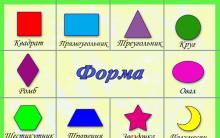
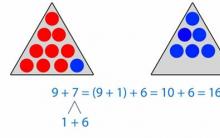

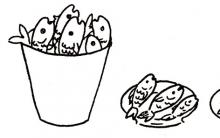
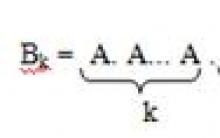
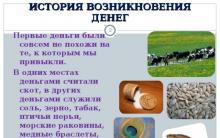




Map second language of geography
Literary games in elementary school Games for children in the library elementary school
Presentation "role-playing games in dow"
The green color on the physical map shows what the colors on the physical map represent
Intellectual game "through the pages of history"